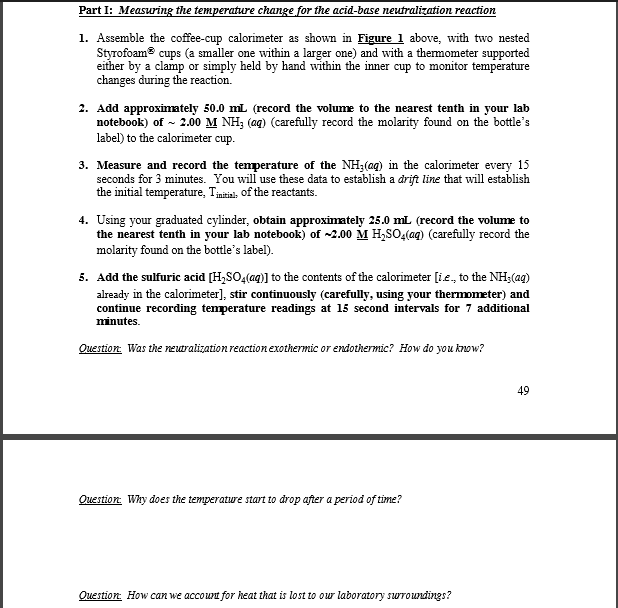CHEM 1320 Study Guide - Graduated Cylinder, Calorimetry, Sodium Hydroxide
Document Summary
The results from the heat of reaction lab part ii indicate heat absorption for and a heat release for kno3. Part iii results show that the molar heat of. Cu complexation of the ion by ammonia is a negative value as well. Part iv identify the molar heat of neutralization (for hcl and ch3 cooh combined with naoh) as positive values. The significance of this process is that it is possible to determine the heat of reaction through using a simple solution calorimeter. The main point of this experiment was about bond energies. Some chemical bonds require a lot of energy to break, while others do not require as much. One can measure the energy changes and determine the heat change, along with the energy changes associated with such reactions as: heat of solution, heat of formation, and heat of neutralization. Of course there are various explanations as to what could have caused any errors.


